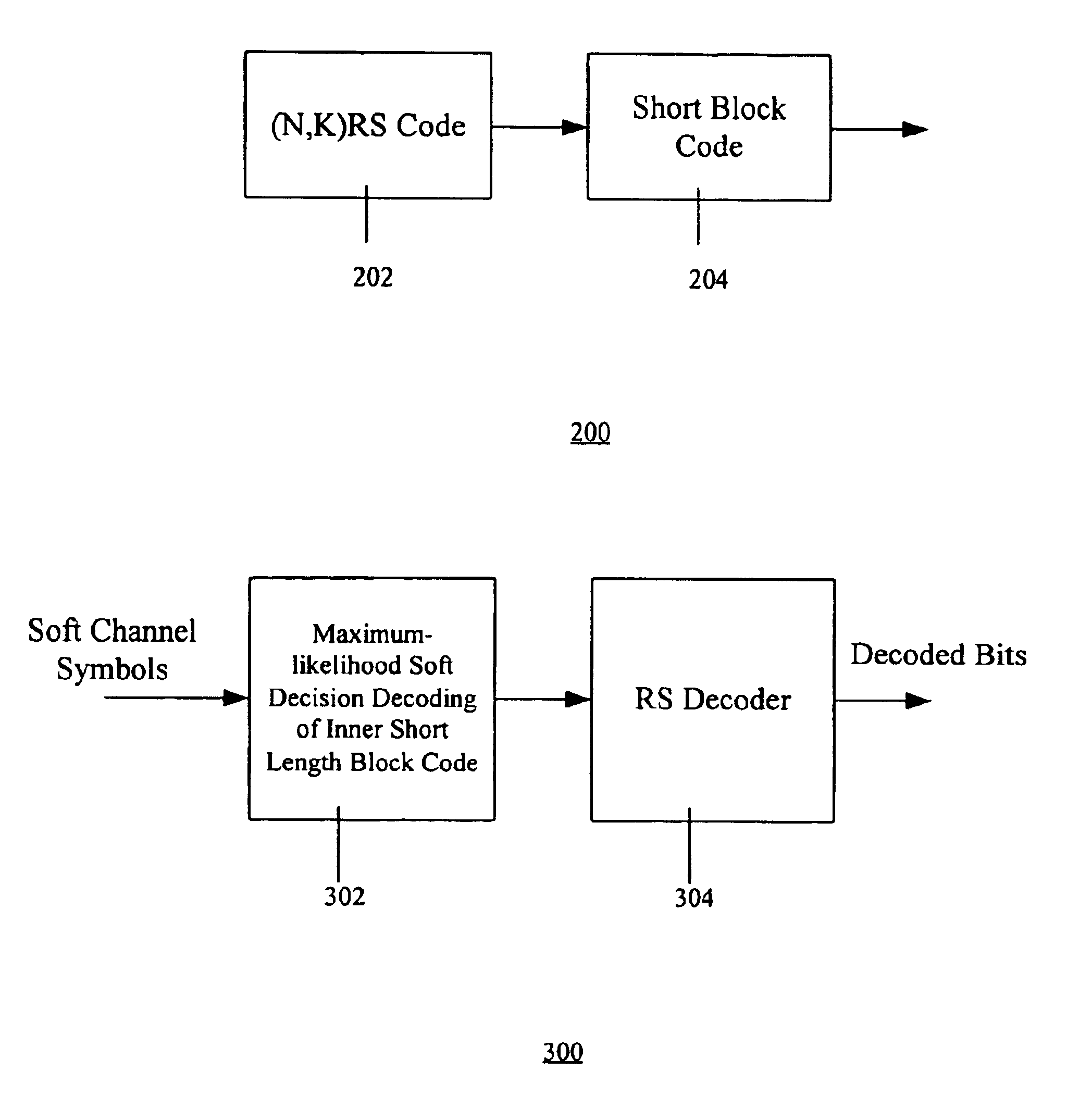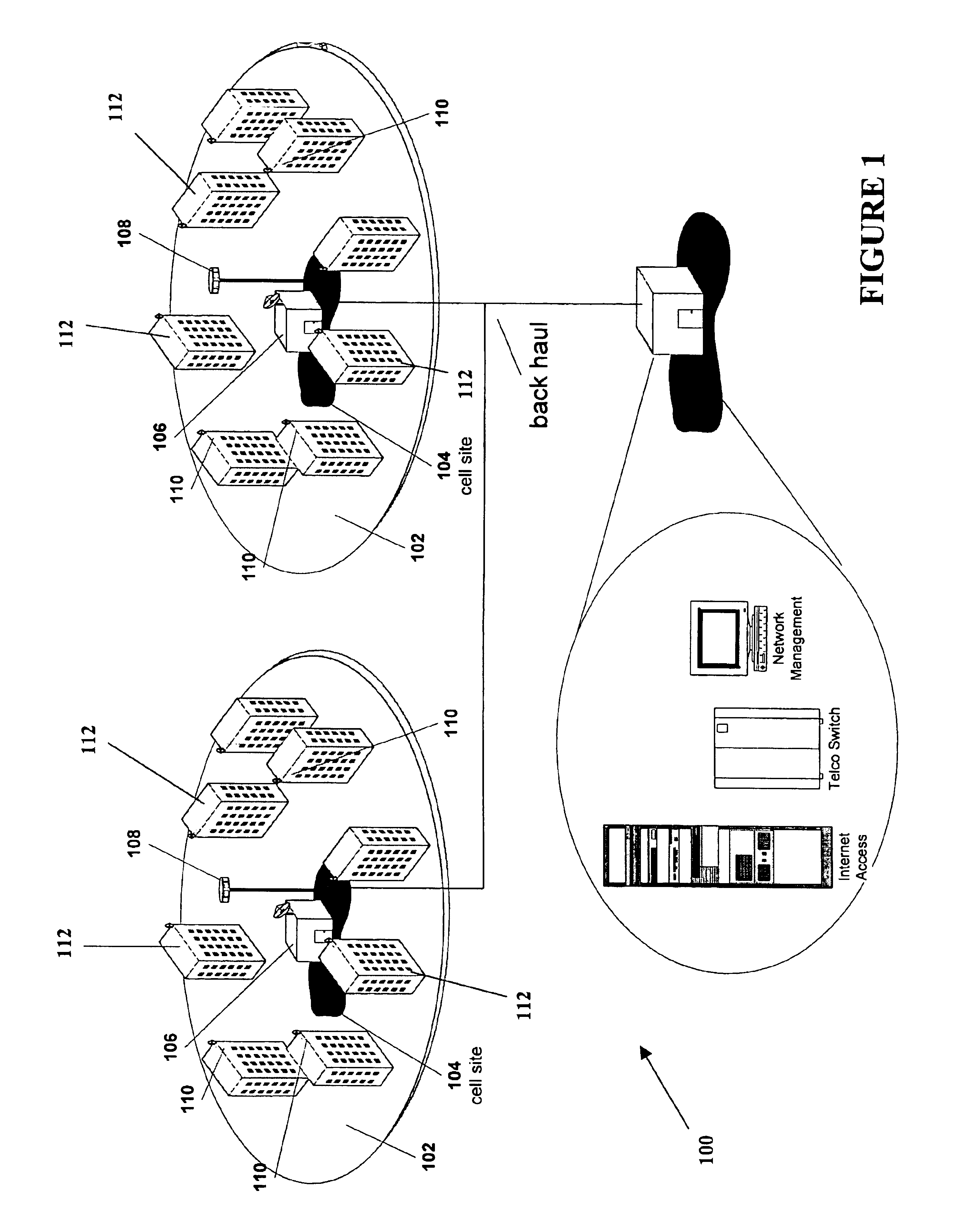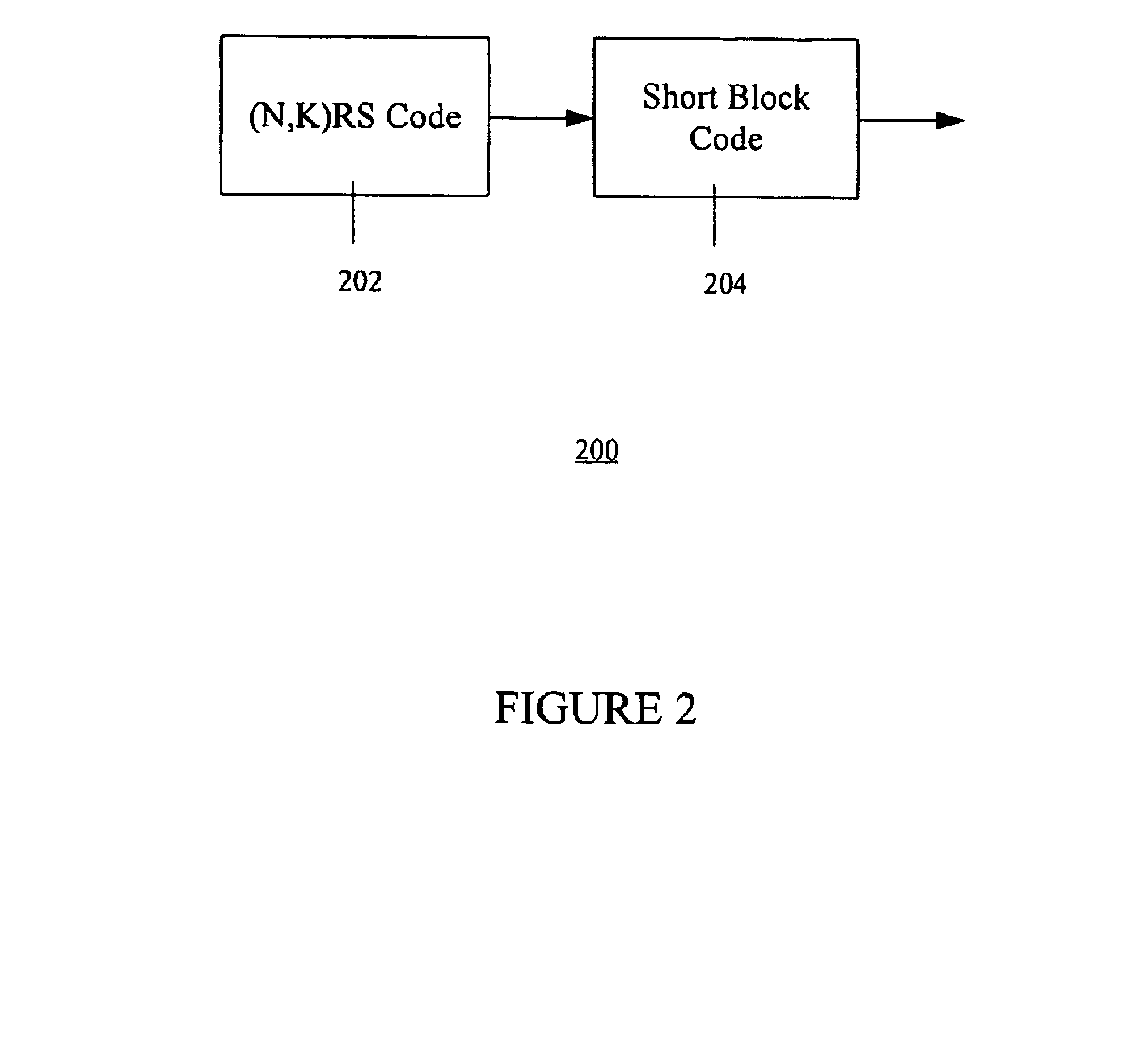Method and apparatus for concatenated channel coding with variable code rate and coding gain in a data transmission system
a data communication system and variable code rate technology, applied in the field of coding methods and apparatuses, can solve the problems of more complex code implementation and more complex code, and achieve the effects of reducing complexity, cost, size and power consumption, and efficient coding data
- Summary
- Abstract
- Description
- Claims
- Application Information
AI Technical Summary
Benefits of technology
Problems solved by technology
Method used
Image
Examples
Embodiment Construction
[0033]Throughout this description, the preferred embodiment and examples shown should be considered as exemplars, rather than as limitations on the present invention.
[0034]One significant advantage of the present concatenated coding technique is that it not only eliminates the need for a symbol interleaver between the outer and inner codes, but it also enjoys drastically reduced implementation complexity of the inner code Viterbi decoder. That is, the Viterbi decoder used to implement the inner code is much less complex than those required by the prior art approaches. Viterbi coders / decoders are well known in the art and are described in much more detail in a text by Shu Lin and Daniel Costello, Jr., entitled “Error Control Coding, Fundamentals and Applications”, published by Prentice Hall in 1983, the entire text of which is hereby incorporated by reference herein for its teachings on error control coding.
[0035]The present inventive concatenation technique does not require use of a...
PUM
 Login to View More
Login to View More Abstract
Description
Claims
Application Information
 Login to View More
Login to View More - R&D
- Intellectual Property
- Life Sciences
- Materials
- Tech Scout
- Unparalleled Data Quality
- Higher Quality Content
- 60% Fewer Hallucinations
Browse by: Latest US Patents, China's latest patents, Technical Efficacy Thesaurus, Application Domain, Technology Topic, Popular Technical Reports.
© 2025 PatSnap. All rights reserved.Legal|Privacy policy|Modern Slavery Act Transparency Statement|Sitemap|About US| Contact US: help@patsnap.com



